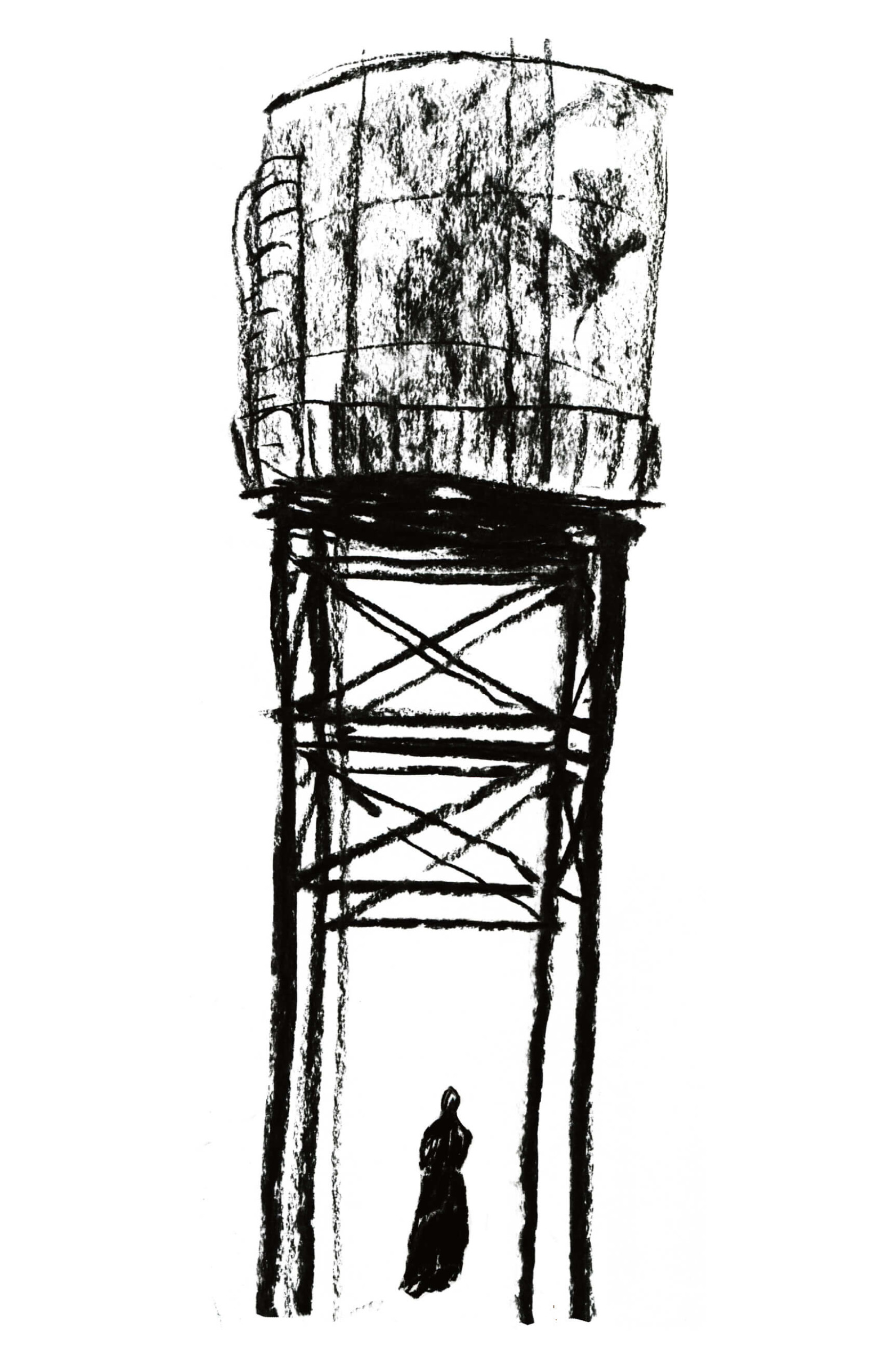I first visited Sudan in 2004, when the war in Darfur was just over a year old. Flying to Nyala, the capital of South Darfur state, I began reporting on the mass atrocities committed by Omar al-Bashir’s pro-Arab junta against non-Arab communities accused of supporting a small rebellion. Yet if, as I had been told, the conflict was about “Arabs” killing “black Africans,” Nyala painted a more complex picture. It was a stunning melting pot of people, some considered “indigenous,” others who traced their ancestry back to centuries-old kingdoms, others still seen as newcomers, both Arab (some invisible, their skin as dark as anyone’s) and non-Arab.
Perhaps no community had a more dramatic story than the Zaghawa, a non-Arab tribe, which at that time numbered no more than a few hundred thousand in a country of thirty million. Originally from Dar Zaghawa, in the far north of Darfur, they had gradually migrated south, fleeing drought. Dar Zaghawa was not always so dry. In the 1930s, its main landmark, Wadi Howar, an extinct river making the border with the Chadian Sahara, was still home to giraffes. Then an administrator in the colonial British government, Wilfred Thesiger boasted that he had killed thirty lions during his two-year tenure in northern Darfur. (It “was perhaps the most beneficial thing I did there, and certainly the most exciting,” he wrote in his memoirs.) As late as the 1960s, lions, which decimated the herds of pastoralists and sometimes killed people, were a grave danger. Firearms and demographic growth hastened the wildlife’s decline, but the primary factor was the lack of rain, which pushed those animals that survived south.
People moved the same way. Beginning in the 1970s, thousands of Zaghawa shifted some six hundred miles south; Arab pastoralists also traveled along the same route. But while the migration of most Arab tribes was haphazard, the initial Zaghawa migration was a planned response to worsening droughts. In the late 1960s, two well-educated elites had the idea of relocating their community to more fertile land. Astonishingly, they turned this idea into reality, overseeing, with government support, a mass-migration of tens of thousands of people.
The contrasting stories of Arab and Zaghawa resettlement offers a stark parable about climate migration.
For a while, these early “climate refugees” adapted well in the new environment. Zaghawa farmers obtained better harvests than in their homeland, and herders benefited from the absence of the tsetse fly that infected livestock. Over the next three decades, as more moved south, they established settlements across southern Darfur. However, in a bitter irony, they fled drought only to become trapped in ethnic conflict. When the war began in Darfur in 2003, Arab militias known as the janjaweed, or “evil horsemen,” drawn largely from migrant newcomers, attacked Fur as well as Zaghawa (and other non-Arab) communities, burning down entire villages. Death tolls between three or four hundred thousand have been repeated over the past eighteen years, but the continuous violence makes it likely that more were killed. About three million were forced to leave their land.
The contrasting stories of Arab and Zaghawa resettlement offer a stark parable about climate migration. While one violently set upon locals in South Darfur, the other tried to coexist peacefully with them and to their mutual benefit. By recent World Bank estimates, at least 216 million people, including 86 million in sub-Saharan Africa, could have to leave their ancestral lands and migrate within state borders by 2050. As larger swathes of the earth grow uninhabitable, much depends on which of these two models communities will adopt.
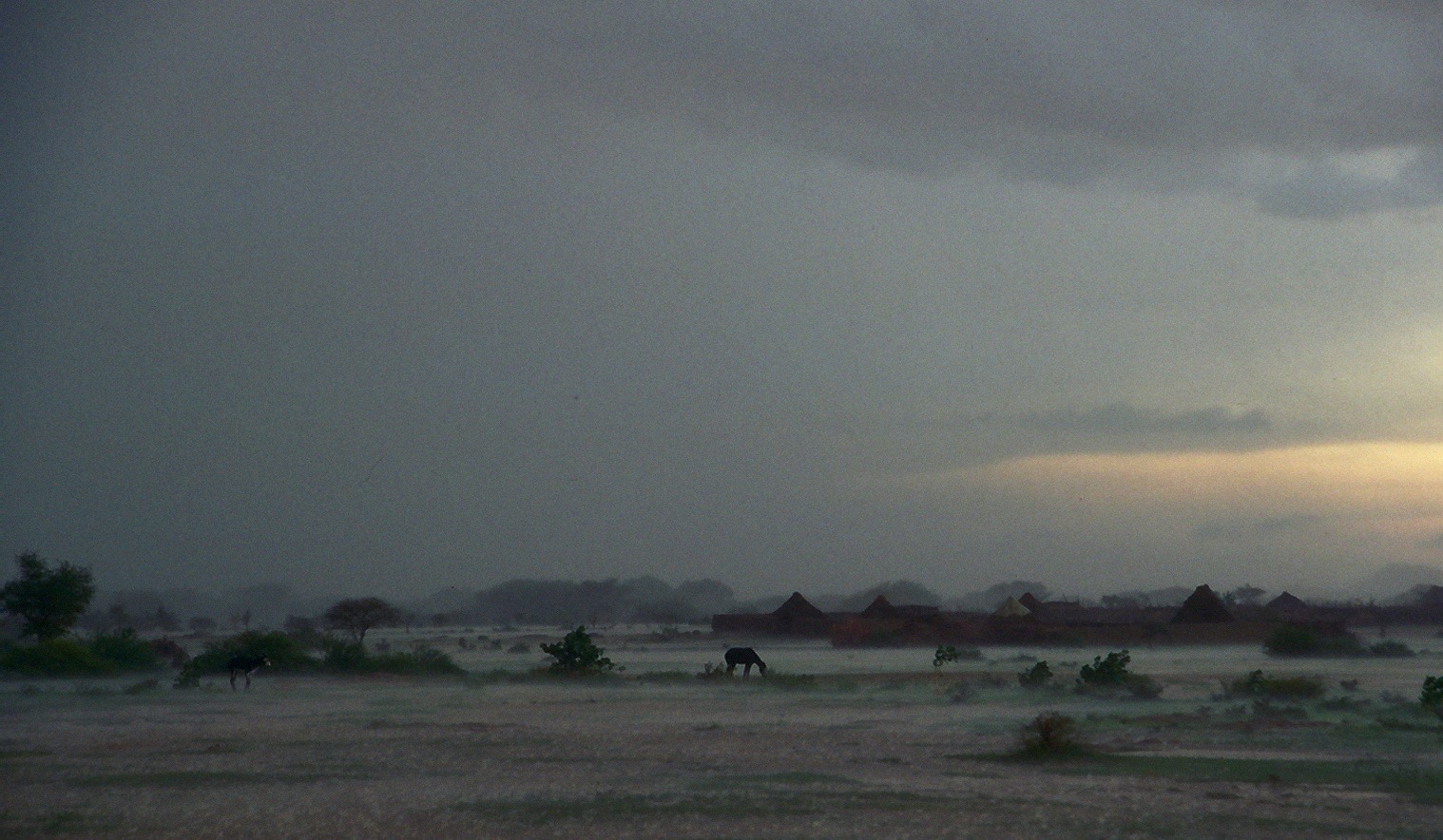
Opening the Land
By the end of the nineteenth century, the British conquest of Sudan brought together different precolonial kingdoms, such as the Darfur and Funj sultanates, under the umbrella of a single colony. To this were added more remote interior lands, including those in modern-day South Sudan, which had been bled dry by decades of Muslim slave raiding in non-Muslim communities. In the early 1920s, Anglo-Egyptian administrators abolished slavery, and, according to the colonial historiography, set up a benign system known as the “native administration,” based on ancient chieftaincies. In fact, political power was gradually entrusted to a new elite recruited among Arabized communities from the northern Nile Valley, colonization’s gateway. Thus began their decades-old hegemony over central power in Khartoum.
Around the same time, remote peripheries like Darfur fell under the “Closed District Ordinance,” which barred residents from leaving at the risk of imprisonment. Guy Moore, district commissioner of North Darfur, was nicknamed the “tyrant of Kutum” (after the oasis where he was based) for zealously enforcing the law; he saw the area under his jurisdiction to be a reserve of wild people and wildlife. (The fanatic hunter Thesiger was Moore’s deputy.) Insurgencies began in southern Sudan even before independence in 1956; they soon spread through large swathes of the east and the west of the country, which were historically neglected by the center. Civil war has been a constant, mainly in the south, interrupted now and then by unimplemented peace agreements, which mostly allow belligerents to prepare for the next round of fighting.
The contradictions of Sudanese state-building can be glimpsed in the careers of General Abderrahim Mohammedu and Mahmoud Beshir Jamma, the Zaghawa elites who orchestrated their community’s great migration south. I met them in 2004: retired General Abderrahim in Nyala, in the house of his friend Magdum Ahmad Rijal, South Darfur’s most important chief, and former minister Mahmoud Beshir at his small house in the city of Khartoum Bahri. By then, both were old, disillusioned with the path the country had taken and worried about the war. Abderrahim was not afraid to openly criticize the regime, which surprised me, as I knew that the intelligence service was busy at work in Nyala. The day before, a Sudanese friend who had invited me for a coke had received a visit from the police.
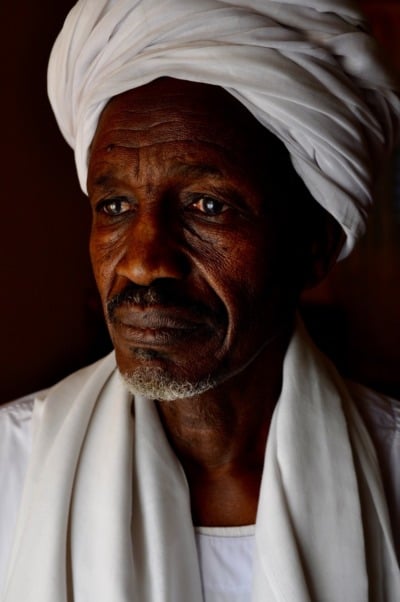
Abderrahim was born in 1937 in northern Darfur, into one of the greatest Zaghawa royal dynasties. In the 1960s, as the newly independent nation began luring students into the army, he became the first Zaghawa to enter military college, and then to be promoted to the rank of officer. It was in the army that he got his first taste of Sudan’s ethnic hierarchy. Most of his comrades, who were from northern Sudan, saw Darfurians as little better than savages. Abderrahim told me that the idea to move his community south had in fact come to him from an Arab, Ahmad el-Nil Defalla, then army commander of Darfur province. Defalla had blamed the poverty of the Zaghawa on their “laziness,” claiming they would have been unproductive even in oil-rich or fertile areas, like in southern Darfur. The remark stuck with Abderrahim, who then persuaded a more open-minded general to write letters to Zaghawa kings raising the idea of migration. But the royals categorically refused to abandon their ancestral land.
In 1971, after a stint fighting the Anyanya rebels in southern Sudan during the so-called “First Civil War,” Abderrahim returned to Darfur as part of a state delegation looking into food security. The 1960s had been very dry. Seeing the parched land, the idea of moving people south returned to him. In El Fasher, once the Darfur sultanate’s capital, he met Mahmoud Beshir, five years his elder and one of the first Zaghawa to be educated, at a time when Darfur only had a handful of elementary schools. Dreaming of bringing water to his dry homeland, Mahmoud graduated as a water engineer just after independence and began assisting with the construction of dams. His efforts made water available at the edge of the desert, allowing herders from different tribes to settle there. The Beni Hussein, an Arab pastoralist community, had long lived nomadically—and come into conflict with the Fur—until the British carved an area for them, one that used to be called Dar Otash, the “land of thirst.” In that area, Mahmoud worked on the Abu Jidad dam, which helped bring the skirmishes to an end. “If we had resolved the water problem everywhere then perhaps there would be no war in Darfur today,” Mahmoud told me when I met him in Khartoum.
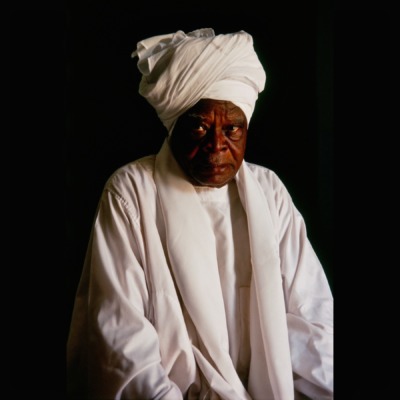
As a child, Mahmoud had to fetch water from remote wells before beginning his school day. He grew up among elders who had survived famines, in areas where cattle were gradually replaced by camels and millet farming increasingly failed. By the time he came to study engineering, he knew that new droughts were in the offing in Dar Zaghawa. He, too, had the idea of moving the community south; importantly, he also had the ear of then-president Jaafar Nimeiri.
In 1971, Mahmoud and Abderrahim wrote a letter to Nimeiri outlining their project of moving the Zaghawa south, noting that “people are going to die from starvation if they don’t move.” Nimeiri gave them his support. Of course, Abderrahim knew it was not only about saving lives. The regime’s idea was to use the Zaghawa as a human buffer against the southern Sudanese rebels, who remained seen as a threat, even as peace talks were ongoing.
But traditional chiefs kept refusing the ideas of these educated youngsters; they had not been sent to school to challenge the old order. So Abderrahim bypassed the elders. Every afternoon for three weeks, he went to El Fasher market—where the humblest onion sellers have stalls beside the wealthiest camel merchants —and talked directly to his kinsmen. In this way, he obtained the consent of three hundred families. He also spoke to the pupils of the town’s secondary school. “He was well received,” Omer Manis, a student at the time, and now Sudan’s ambassador to France, told me in September 2021. “A respected military officer, telling us of the need to find solutions to allow people to live in dignity. It was our cup of tea.” Abderrahim also wrote letters asking other tribes affected by the drought to join, including the Meidob, Tama, Gimir, Misseriya Jebel, Erenga, and Masalit. “Move with us to the South!”
In 1972, Abderrahim, then a major, was asked by Nimeiri to find an area to resettle. He knew where to go. While fighting in southern Sudan, he had heard of Kafia Kingi, a lush and scarcely populated land at the very south of Darfur. It had been the Sultanate’s southern frontier and a post for the slave trade. From Hofrat al-Nahas, a nearby mine, copper was extracted to make nahas, huge drums symbolizing the sovereign’s power. “We patrolled the area for ten days, studied the weather and the land,” Abderrahim remembered. “There were no routes, the trees had grown on the road the British had made in the 1940s. We followed big tracks left by elephants. We couldn’t drive more than twelve miles in nine hours. To eat, we shot game.”
The next year, Abderrahim gathered a committee of seventy-five representatives from every main Zaghawa village and took them to Kafia Kingi. Then they called for their kin to join them, and the migration began. Some pioneers came on army or merchant’s trucks. But most traveled on the backs of camels, horses, or donkeys, or on foot with their livestock, bringing all they could carry on the months-long journey. Soon after they arrived, rains brought insects and snakes that desert dwellers did not recognize. The pioneers thought the local people, from tribes they had never heard of, had sent these creatures to scare them away. Many moved back north, but only about sixty miles, to the slightly dryer but still green area of Legediba, where it rained about thirty inches a year, as compared to less than eight inches in Dar Zaghawa.
In Legediba and elsewhere, the Zaghawa asked for and were given land by the local Fur chiefs. So, too, were Arab nomads arriving from the north. “Everyone could have land,” Hassan Saleh, a Zaghawa chief, recalled when I met him in 2008 in Dugo, a village founded on the green foothills of the Jebel Marra mountains. “The Fur chief would show you an empty place, then you’d take your axe. When we came here, there were forest and wild animals, elephants, lions, monkeys, ostriches. We cut the trees and farmed, bred cattle and sheep.” They “opened the land,” as goes the Darfurian expression.
At first, it seemed all was going well. In 1973, Darfur, like most of the Sahel, experienced its lowest rainfall on record. But Legediba was spared, and the harvest was bountiful; the Zaghawa brought Abderrahim and Mahmoud millet to thank them. Even conservative chiefs, who had remained behind, changed their mind. “I brought my cousin king Ali Mohammedein, who stayed for some time, farming and resolving local conflicts,” he told me. In 1983, as an even greater famine began, nearly two hundred thousand Zaghawa migrated south from North Darfur, together with members of other Arab and non-Arab communities. “The Zaghawa migrants mixed with other tribes and married their daughters,” Abderrahim remembered. “We traded, farmed, bred livestock, went for work to Libya, came back with money, and taught local communities the livestock trade, which they didn’t know.” The Zaghawa also taught Arab herders to farm.
The Zaghawa’s migration could have offered a model for other communities in Sudan whose livelihoods were similarly imperiled by climate change. But by the 1980s, the central government had grown unhappy with them coexisting with the Fur, Arabs, and other neighboring tribes. Until then, the traders in Darfur as in South Sudan were all from the Nile Valley north of Khartoum, as were the administrators. Indeed, the very word for trader, jellaba, had become shorthand for anyone belonging to the Arabized tribes in northern Sudan. Abderrahim remembers a jellaba’s threat: “Those people were blind and deaf, but you came and taught them things. You’ll have to pay for that.” Jellaba politicians and businessmen began to paint the Zaghawa as overambitious invaders, turning local non-Arabs against them. “We, Zaghawa, are not wished for because we want to be equal to the jellaba,” Abderrahim told me.

Look For a New Planet
Meanwhile, discontent was brewing in other parts of the country. In 1983, the Sudan’s People Liberation Army (SPLA), a guerrilla movement founded by the mutinous army colonel Dr. John Garang, embarked on its war for independence from the government in Khartoum. In response, successive governments recruited militias among Darfur’s Arabs, who were seen as natural allies against the non-Arab rebels. The use of proxy forces is an old Sudanese tradition, dating back to precolonial slave armies. As militias fund and feed themselves through pillage, they are less costly than regular forces—a strategy Alex de Waal has labeled “counterinsurgency on the cheap.”
As militias proliferated, tensions grew in Darfur between Arabs and non-Arabs. In 1985, Abderrahim left the army and settled in Nyala, where he formed and chaired a committee for peaceful coexistence of South Darfur tribes with his friend the magdum and an Arab notable as deputies. The multi-tribal group tried to reconcile communities in conflict, but their success was limited. Four years later, as a military-Islamist coup brought Omar al-Bashir to power, the first major conflict pitted all the main nomadic Arab tribes of Darfur against Fur farmers. It was spurred by increasing scarcity of resources, which had been exacerbated by the “Reagan famine”—so remembered after the food aid the U.S. president had belatedly sent across. But what made the violence unprecedented was the central government’s intervention in favor of the Arabs. Sharif Harir, a prominent Zaghawa anthropologist studying tensions at close quarters, rightly predicted Darfur would become the next South Sudan.
After 1989, as the army grew tired with the war in the South, the Islamist junta stepped up the mobilization of militias, in particular among Darfur’s Arabs. The so-called Popular Defense Forces (estimated to number up to one hundred thousand all over Sudan in the 2000s), a paramilitary group formed that year, was likewise set up to protect the Islamist regime from a military coup. In Darfur, Abderrahim discovered the government was mostly arming Arab tribes, exploiting the hunger for land among these drought-impoverished newcomers. “I knew that soon everyone would fight against everyone,” he said.
Civil war has been a constant in Sudan, interrupted now and then by unimplemented peace agreements, which mostly allow belligerents to prepare for the next round of fighting.
Now it was the turn of non-Arabs in Darfur to rebel. Beginning in June 2002 and March 2003, respectively, the Sudan Liberation Army (SLA) and the Justice and Equality Movement (JEM) launched their first attacks on government targets. Abderrahim’s peace committee made contact with the insurgents in a desperate attempt to contain the conflict. They also wrote Bashir a letter warning of a group of hardliners called the “Arab Gathering,” who were calling for Arab supremacy in Darfur. But the president turned a deaf ear to them. In April 2003, the JEM rebels successfully attacked El Fasher airport, destroying government planes and humiliating the army. In response, Khartoum gave the Arab hawks—traditional leaders and a handful of government officials and army officers—carte blanche for arming the janjaweed. They enlisted landless Arabs, promising them the land of non-Arabs tribes. Early the following year, Abderrahim’s home village of Am Boru was burnt to the ground.
Zaghawa settlements in South Darfur were attacked too. Water pumps were systematically destroyed, and those who were not killed were displaced to camps. Atta el-Manan, the governor of South Darfur, was said to be present when government forces pillaged the Zaghawa part of the town of She’eria. “They should look for a new planet,” he was quoted as saying. Abderrahim felt that Khartoum’s aim was nothing less than “the destruction of our history and future.”
Shortly before I first met him the next year, Abderrahim had managed to split away four members of a delegation of U.S. congressmen visiting Khartoum. Shepherded around by the government, they were being sold a sanitized version of the conflict, and he wanted to tell them what was really happening. But the authorities noticed when they went missing; they didn’t like that Abderrahim was advocating for peace, including at the mosque after prayer. Their preference was a military solution: annihilating the rebels and their alleged civilian supporters. The retired general didn’t pay much attention, but his daughter Ibtihal was worried.
She was then teaching agronomy at Nyala University, which was full of intelligence agents, some hidden among students or staff. Ibtihal felt watched by an Arab student who worked at the library and seemed to follow her around campus. In April 2005, as she was preparing to fly to Khartoum for the defense of her dissertation, he stabbed her to death on the university premises. Caught by her assistant, he was hastily sentenced to death before he had time to divulge who was behind the hit. Three days after Ibtihal’s murder, Abderrahim received a visit by a government delegation including intelligence chief Salah Gosh and interior minister Abderrahim Mohammed Husein, now indicted by the International Criminal Court for crimes committed in Darfur. He wasn’t convinced by their investigation. “I’ve got my own conclusions,” he told me. “They are the murderers.” After the burial, Ibtihal’s body was unearthed and abandoned, naked, on the ground. “They tried everything to tear me up,” Abderrahim said.
The old man was unwilling to give up. Two years later, he drove to his homeland in Dar Zaghawa and crossed into rebel territory. The insurgents had by then fragmented into dozens of factions, and his ambition was to reunite them. It didn’t work out. When I met Abderrahim again in December of 2010, he looked crestfallen. I felt then that peace might not have been all he was after. In his mind, the death of thousands of Darfurians had merged with Ibtihal’s murder. “Revenge might be good but can cost lots of lives. As for justice, the International Criminal Court is slow and uncertain,” he said. “And it will not kill the criminals. Sending them to prison is not enough. Atta el-Manan is even more responsible than Omar al-Bashir. If I could find him, I’d shoot him, even at the cost of my life.” There was neither revenge, nor justice. Abderrahim died in 2012.[*]
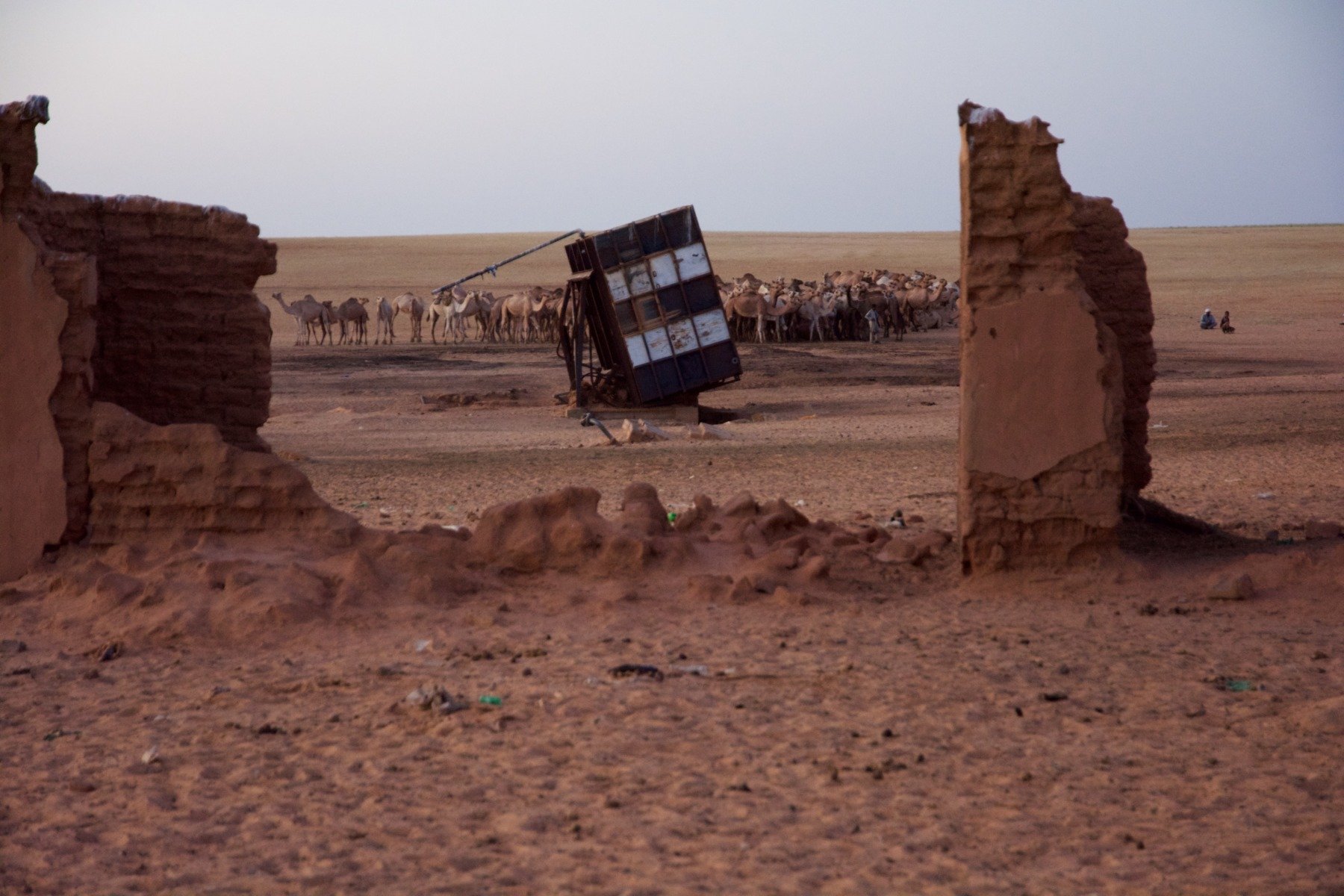
Nomadland In Bad Decline
Around this time I traveled along one of few stretches of paved road in the interior of southern Darfur. Though I knew the region well enough by then, I was still struck by the sight of camels grazing on grass-covered hills—rather than farms and cattle pastures. When I looked closer, I could make out stone circles hidden under the grass, the only remnants of villages once inhabited by Fur farmers. When the war erupted, those villages were burned by the camels’ owners, who had been enlisted into the janjaweed. Now only the dried palm tents of the Arab nomads could be seen along the road.
“If you’re in a flooded river and see a tree, won’t you catch it?”
Most of South Darfur’s Zaghawa villages, which Abderrahim helped settle, had been burned as well. Slightly off the paved road, Dugo was an exception, though not for want of trying on the part of the government and janjaweed. “We have strong self-defense forces, with enough horses and guns,” chief Hassan Saleh told me in when I met him there. “When our livestock is looted, we follow the thieves and fight them very hard.” Cows had been taken from Dugo by neighboring village’s janjaweed, but a Zaghawa posse managed to get them back. Still, Saleh was worried: “Those born in the North are good fighters, but our boys born here aren’t. Maybe the water is different?” The Zaghawa born in South Darfur are nicknamed Ghibeish, after a shrub which has no thorns. In many places, the balance is too unequal and non-Arabs are forced to share their land or harvest with Arabs to be allowed to safely farm.
The janjaweed have gradually been integrated into more official paramilitaries. Their latest avatar, the Rapid Support Forces (RSF), was created in 2013, ostensibly to reign in the most rogue elements of the Arab militias. It is headed by Mohamed Hamdan Daglo, better known as “Hemetti,” who had been picked from among Arab migrants when the war began. (Driven south by the drought in the 1980s, his small Arab clan had been granted an empty piece of land by Fur chiefs.) Throughout the region, Hemetti’s formidable force is now largely in control, but not better controlled. Whether they are current or former RSF members, disgruntled or rogue elements, Arab militias still tax or steal vehicles on the paved road near Dugo—which, for many years, commercial trucks only braved with armed escorts, sometimes enlisted from the same militias.
In 2015, Zaghawa rebels exiled in independent South Sudan tried to reenter Darfur and were defeated by the RSF near Legediba. Beginning in the same year, more than a hundred Zaghawa self-defense fighters and youths from Dugo joined the RSF, uniting with their former aggressors rather than being displaced by them. After that victory, Hemetti’s RSF became Bashir’s praetorian guard, but in April 2019, after months of protests against the regime, Hemetti played a crucial role in the dictator’s ouster. He is now the deputy chairman of the military-civilian council that is supposed to lead Sudan to democratic rule.
In October 2020, an RSF crew drove me to Zuruq, an area in North Darfur at the edge of the Sahara, where Hemetti’s clan had returned, after years of conflict in the south with the Fur. The “RSF capital” I had heard so much about was really a collection of huts on a sand hill. “We’re just like refugees, in houses made of wood and straw,” Hemetti’s uncle, chief Juma Daglo told me, with black irony—the real refugees are the non-Arabs his militias displaced. Juma felt his people were justified in joining the janjaweed. “If you’re in a flooded river and see a tree, won’t you catch it?” he asked. In the decades since independence, the government in Khartoum had done next to nothing to combat drought or poverty in Darfur. But when the war began, Juma said, they at least gave them weapons to attack non-Arabs. He caught the tree and had no regrets. “The government supported us, and now we rule the state.”
Like many Arab leaders, Juma believes that the time has come for nomads to settle down and get an education. (He himself didn’t go to school; Hemetti dropped out in third grade.) He showed me Zuruq’s new school and clinic, housed in large metal containers abandoned by the United Nations. Apparently the school, which is funded by the RSF, is free for all students; two hundred of one thousand pupils are said to be Zaghawa. The RSF have also erected water towers that rise high above the desert floor. In the large valley north of Zuruq, camels said to be Hemetti’s drink under the guard of RSF troops. But Arab herds also draw from private water tanks belonging to the Zaghawa, who consider the whole area as theirs. At one of those tanks, I met a Zaghawa herder who felt that peace would be possible if Arabs didn’t claim land rights and the RSF treated people equally. Others, however, believe that new conflicts are likely.
Could coexistence, which had not been possible in the lush south, be workable in the drying north? Some hope development projects could be the solution. After all, their lack was also a main cause of the rebellion. Indeed, Arabs only returned north because they could now fund services in the desert, thanks to their enrichment during war. However, uneven development can be harmful too. In the 1990s, Arabs who tried to drill boreholes in Zuruq were chased away by armed Zaghawa. This year, as Arab attacks again displaced tens of thousands in West Darfur, non-Arab farmers destroyed their own wells to keep herders away.
As for the future, I believe many Darfurians will adopt durably to a new, hybrid kind of nomadism, governed by the rhythms of permanent conflict. The camps set up for displaced populations have already become cities where residents can get services unavailable in rural areas. Based here for the better part of the year, they seasonally migrate to farm after the rains—if the janjaweed do not occupy their land. This summer, in northeastern Jebel Marra, armed Arabs attacked Zaghawa farmers who left their camps to sow the land they used to farm before the war. It was a conflict between newcomers—the original Fur landowners did not dare to return.
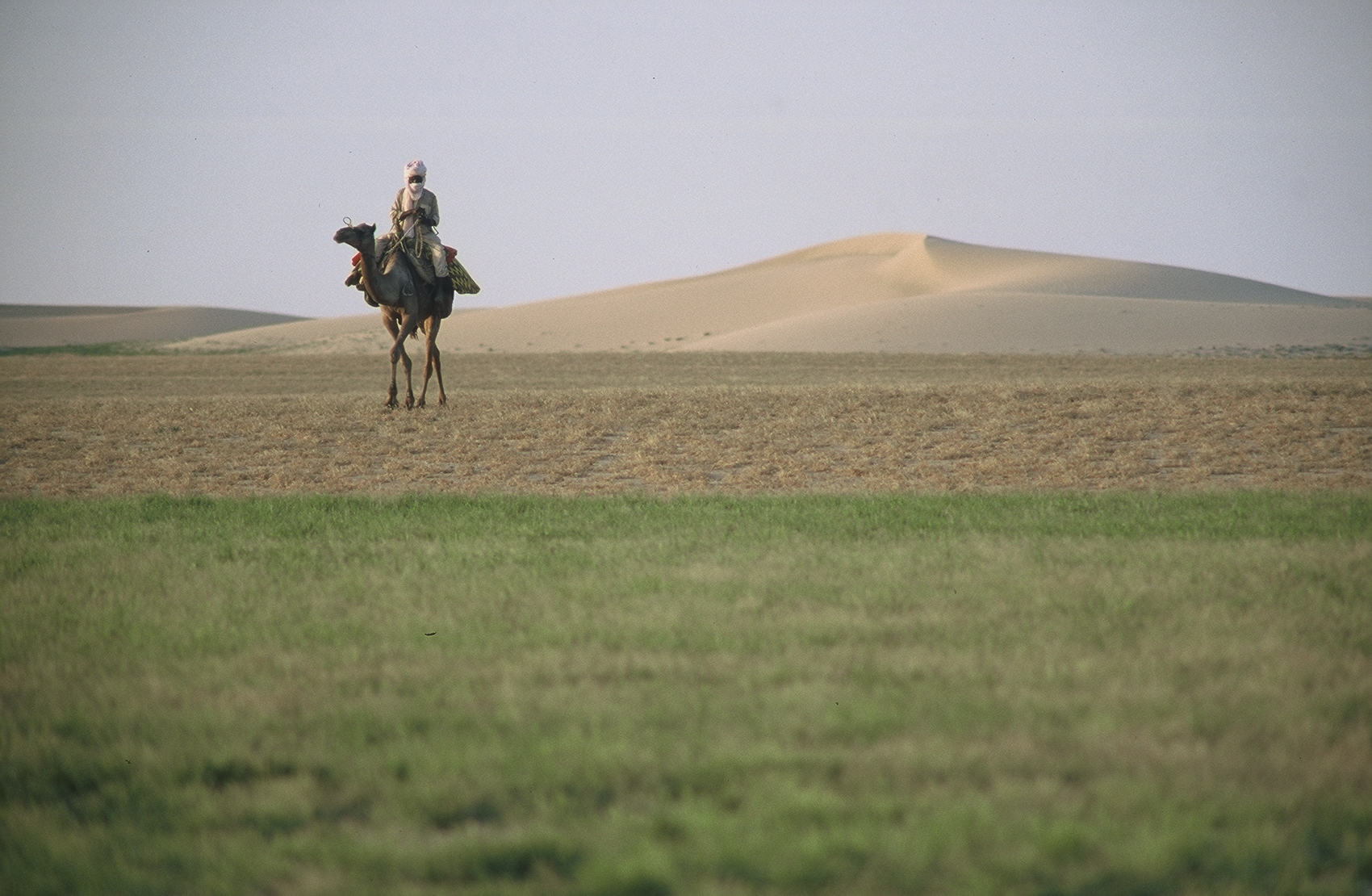
Famine’s Shadow
It is probably a mistake to believe that men on the move do not have any homeland. The Saharan nomads I met spoke with nostalgia of oases, springs, or mountains where their ancestors once lived. Their heirs may have never seen those territories that colonial boundaries made parts of other states. Yet they remain mystically tied to them. In 1951, toward the end of the colonial era, an empathetic British administrator noted of the Zaghawa: “No matter that life is hard, dogged by disappointment, and often lived under the somber shadow of famine, still they come back to the steppes and wadis which they know as home, and which they will not willingly abandon. Our problem is not to help the Zaghawa to leave their present country, but to help them to live a better and more prosperous life inside it.”
His advice went unheeded. As far back as the fourteenth-century Arab geographer Ibn Khaldun, pastoralists have been seen by outsiders as more prone to conflict than settled people. From Mauritania to Yemen, I have heard nomadism—much like migration to the north—described as a threat to security by Western politicians. In Darfur as elsewhere, nomads like Juma have themselves spoken to me of their desire to settle; this would end, their reasoning goes, the need for guns to protect wandering herds, and allow their children to get education. I have been struck by their hunger for learning, not least in the Sahel belt where Boko Haram fanatics fight to empty out schools. Yet I have also seen educated Arabs in Darfur spearheading the janjaweed. In December 2019, a video circulated on social media in which an Arab lawyer from West Darfur delivered an inflammatory speech. It spurred a mob to attack a camp for displaced non-Arabs, killing between sixty and ninety and forcing the fifty thousand residents to flee for the second time.
I have seen Bedouins in Yemen and nomads in Somalia, as well as potato farmers in the Andes, predicting the rains, and even El Niño, by observing the Pleiades and other celestial bodies. Likewise, it seems to me that Abderrahim and Mahmoud saw the portents of worsening droughts in the changing aspects of their environment, which they learned so much about as child shepherds. But their capacity to organize a response—to plan a mass-migration—grew out their education, unprecedented in their tribe. I think now of the society they did so much to create in South Darfur. The Zaghawa newcomers partly lost their desert culture, yet I can’t help but admire how they adapted to a different environment and learned to live with new neighbors, abandoning their parochial tribal identity for a more cosmopolitan sense of Sudanese belonging. They, too, became kind of hybrid people, in between two worlds—the kind of people we need to learn from in order to survive, and even reverse, man-made climate change. If their efforts were all for naught, it was because of negligent governments, as blind as ours are when they erect solid or administrative walls to keep migrants out.
[*] Correction: Due to an editing error, an earlier version of this piece indicated Abderrahim Mohammedu died in 2011. He died in 2012.
